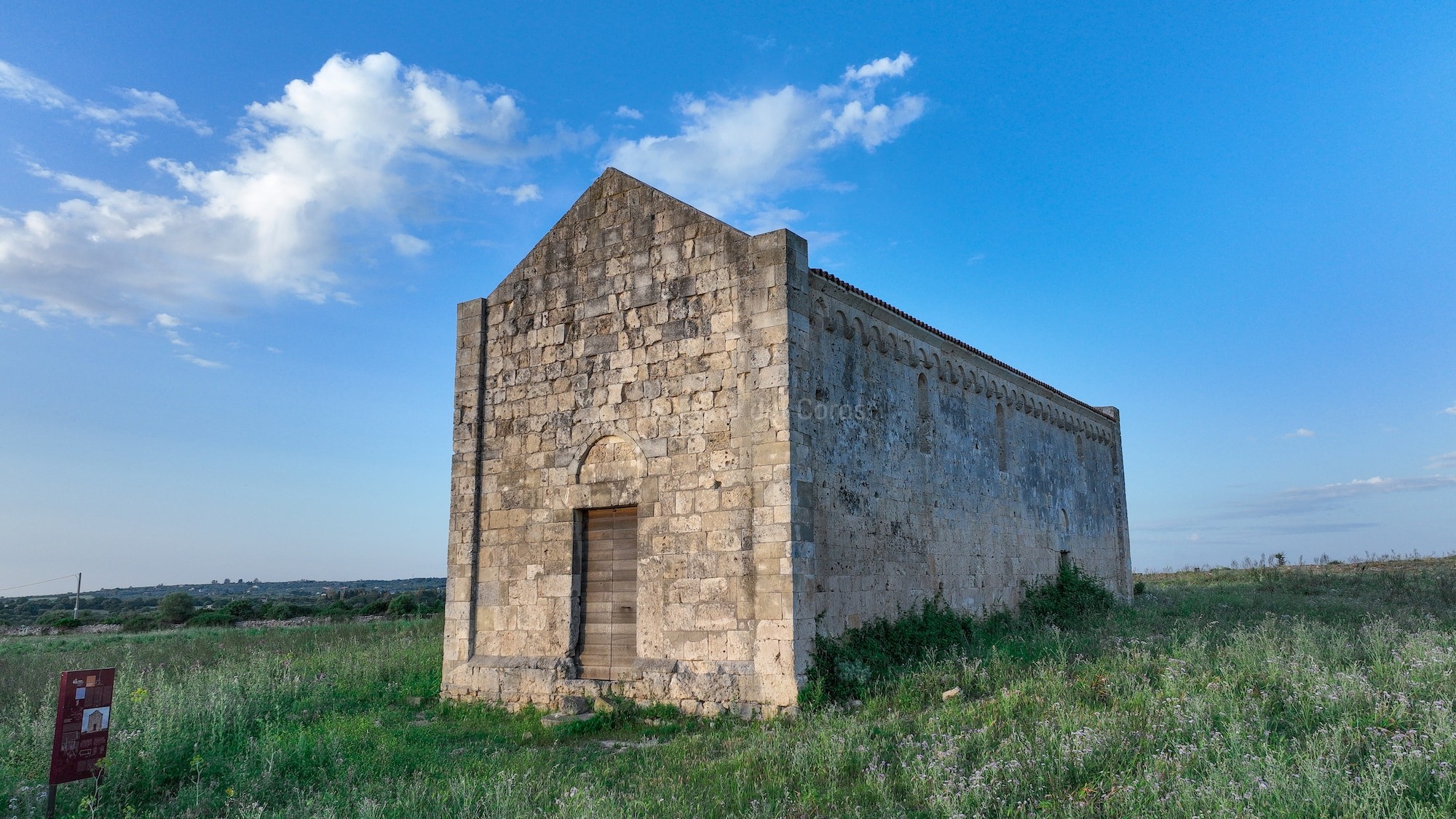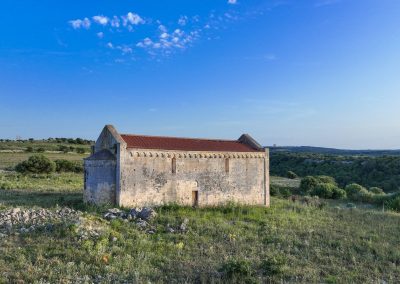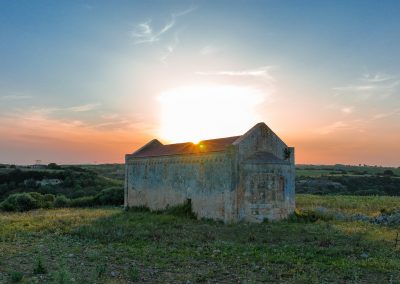
Usini
Church of Saint George of Oleastreto
The Church of Saint George of Oleastreto is seven kilometres away from Usini, and can be reached via the road from the town to the locality of Bainzu Eras, passing through Torriga and Mount Oro. It was built at the beginning of the 12th century and was property of the Pisan nuns of Saint Leonard of Stagno for centuries. The small Romanesque building is located in an advantageous geographical position, bordered by the Rio Mascari and Rio Mannu rivers. A small built up area had developed here, as shown by the discovery of archaeological remains. The church is in Pisan-Romanesque style, and historically is the most important and oldest church in Usini. The first document regarding the church dates back to 1135, when Uberto, the Arch-bishop of Pisa, intervened as papal legate at the synod of Ardara, to solve controversies that had arisen between the canons of Torres and the monastery of Montecassino. The building has a single nave iconography: the apse is semi-circular, with domed vault oriented towards north-east.
The walls of the building are made from locally-sourced tuff ashlars, positioned in regular rows, thirty centimetres high, with thin joints. The wall surface is smooth, covered at the corners by pilasters, and there is an uninterrupted decoration of arches with corbels both on the façade and on the sides, just under the eaves. The tall entrance portal is architraved and has a relieving arch elevated by an ashlar. On the two sides there are lancet windows and a doorway identical to the one at the main entrance, but smaller. The building has simple features, as dictated by the ancient monastic order. Every first of May, the “Warrior Saint” celebration was held in the church, organised by the land owner, with the participation of the cavalry and the worshipers from Usini and Tissi. A tradition that still stands today, as a solemn procession accompanying the statue of the saint. The faithful and people from the nearby towns gather and fill up the external space. The festivity calls for a convivial lunch outdoors and various activities, including a horse race.
Source: “Usini, Un paese Una parrocchia Una pievania dal XIII al XX secolo” (Usini, a Town, a Parish, a Parsonage, from the 13th to the 20th century”, in Italian), by Antonio Bazzoni, Ministero per i beni e le attività culturali bollettino di archeologia 43-45 istituto poligrafico e zecca dello stato libreria dello stato
Source: http://www.sistemacorosfigulinas.it/index.php/territorio-e-cultura/usini/97-comune-di-usini-localita-paesaggistiche


